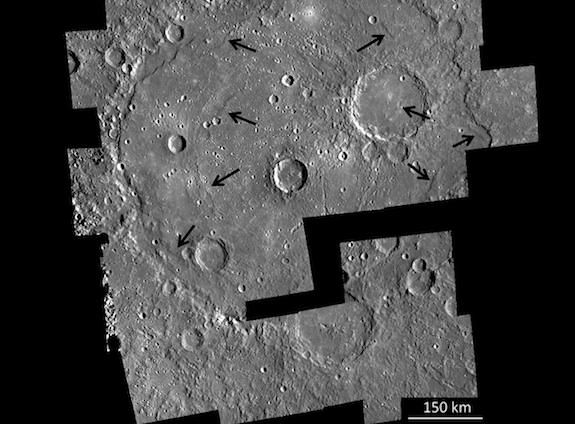MESSENGER Mission: Mysteries of Mercury Revealed
Dr. Michelle Selvans will present new findings from MESSENGER’s orbital imaging on October 20
/https://tf-cmsv2-smithsonianmag-media.s3.amazonaws.com/filer/20121019103029MESSENGER_Thumbnail.png)
After Pluto fell from status, Mercury took the title of smallest planet in the universe. But, it turns out, this dainty planet packs a punch. Using data retrieved from NASA spacecraft MESSENGER‘s year-long orbit of Mercury completed in March 2012, researchers are uncovering new finds about the planet’s unique tectonics, cooling history and three-part core. For the past year, Michelle Selvans, a planetary geophysicist at the Air and Space Museum, has been working with MESSENGER data and will present some of her team’s findings Saturday, October 20 at the museum.
“I’m mostly interested in the deformation history of Mercury,” says Selvans, who has researched tectonics on Mars, the Moon, Earth and now Mercury. “One thing that we’re learning is that there’s a lot more heterogeneity in the tectonics, there’s a lot more variation.” Despite its petite size, Mercury is home to a cratered and varied surface most comparable to the Moon.

Upon closer examination, though, Selvans says scientists have discovered complicated features. Though the evidence of many years of activity during the planet’s cooling history can be seen all over the surface in the form of ridges, wrinkles and craters, researchers have found a pattern of concentrated structures around the equator. “Some of those areas where there’s concentrated tectonics,” says Selvans, “seem to be these assemblages of linked faults.”
The faults, she says, “actually connect underneath the surface, even if they don’t actually connect at the surface.” Understanding how the planet’s faults link and interact with each other will help scientists get a better understanding of the planet’s history.

Below the surface, Mercury’s core also sets the planet apart. Instead of the two-part core we have on Earth—and what was likely present in Venus, Mars and the Moon when they were younger and hotter, Mercury has three distinct layers. In addition to a solid interior and liquid portion, Mercury also has a third layer of solid core.
“That’s an interesting thing to try to understand,” explains Selvans, “not only in terms of Mercury’s history because it’s unique in the solar system, but if we’re trying to assess all of the planets in our own solar system to get an understanding of what exoplanets may be like, I think it’s important to understand why Mercury is unique in this way.”
Despite the galactic scale of her research, Selvans says one of her favorite parts of the job is working with a group of dedicated scientists. “It’s just inspiring to see how much you can do as a team,” says Selvans.
Dr. Michelle Selvans will present “Mercury: Oh Strange New World That Has Such Structures In It!” as part of the Air and Space Museum’s Stars Lecture Series on October 20 at the museum.
/https://tf-cmsv2-smithsonianmag-media.s3.amazonaws.com/accounts/headshot/Leah-Binkovitz-240.jpg)
/https://tf-cmsv2-smithsonianmag-media.s3.amazonaws.com/accounts/headshot/Leah-Binkovitz-240.jpg)